Introduction
The art of making and enjoying zongzi, or rice dumplings wrapped in bamboo leaves, is deeply rooted in the cultural traditions of China, particularly during the Dragon Boat Festival. This ancient festival commemorates the patriotic poet Qu Yuan, who drowned himself in the Miluo River in protest against corruption and injustice. To prevent fish from devouring his body, villagers threw rice-filled leaves into the water, which eventually evolved into the zongzi we know today. Among the various shapes and sizes of zongzi, pyramid-shaped zongzi, also known as triangular zongzi, are particularly popular due to their unique appearance and the ease of wrapping them. However, one question often arises among both seasoned and novice zongzi makers: how long should you boil a pyramid-shaped zongzi to ensure it is cooked perfectly?
This article delves into the intricacies of boiling pyramid-shaped zongzi, exploring factors that influence cooking time, tips for achieving the perfect texture, and the cultural significance of this timeless tradition. By understanding these aspects, you can enjoy delicious, tender, and flavorful zongzi that are a true representation of China’s culinary heritage.
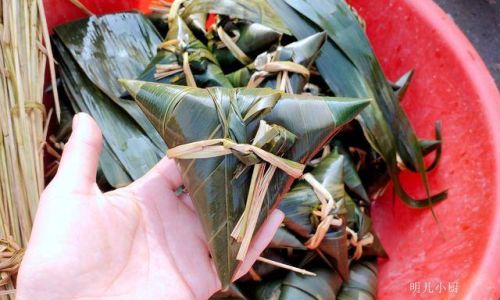
Factors Influencing Boiling Time
Several factors determine how long you should boil pyramid-shaped zongzi. These include the size of the zongzi, the type of rice used, the tightness of the wrapping, and the cooking method. Each of these factors plays a crucial role in ensuring that the zongzi are cooked through without becoming overly mushy or undercooked.
-
Size of the Zongzi
The size of the zongzi is a significant factor in determining boiling time. Larger zongzi require more time to cook through compared to smaller ones. This is because the heat needs to penetrate the center of the zongzi, and larger sizes have more mass to heat up. Generally, pyramid-shaped zongzi range in size from small, bite-sized portions to larger, meal-sized dumplings. As a general guideline, small zongzi may take around 1.5 to 2 hours to cook, while larger ones can take up to 4 hours or more.
-
Type of Rice Used
The type of rice used in zongzi also affects the boiling time. Glutinous rice, which is the traditional choice for making zongzi, has a higher starch content and tends to absorb more water during cooking. This makes it crucial to cook glutinous rice zongzi for a sufficient amount of time to ensure they are tender and sticky. Non-glutinous rice varieties, if used, will have different cooking requirements and may require less time.
-
Tightness of the Wrapping
The tightness of the wrapping around the zongzi is another critical factor. A tightly wrapped zongzi will retain its shape and prevent the rice from expanding and becoming too loose during cooking. This helps in achieving a firmer texture and ensures that the cooking time is more predictable. On the other hand, a loosely wrapped zongzi may allow water to seep inside, causing the rice to become overly soft and mushy. Tight wrapping also helps in preventing the bamboo leaves from unraveling during boiling.
-
Cooking Method
The cooking method you choose can also impact the boiling time. Boiling in a large pot with enough water to fully submerge the zongzi is the most common method. However, other methods such as steaming or pressure cooking can be used, each with its own set of cooking times. Boiling tends to be the most traditional and widely practiced method, as it allows for even cooking and the absorption of flavors from the water and any added ingredients.
Achieving the Perfect Texture
Achieving the perfect texture for pyramid-shaped zongzi involves more than just boiling for the right amount of time. It requires careful attention to detail during the entire preparation process, from soaking the rice to wrapping and boiling.
-
Soaking the Rice
Soaking the glutinous rice before wrapping is essential for achieving a tender texture. Soaking helps in softening the rice grains, allowing them to absorb more water during cooking and resulting in a stickier, more cohesive dumpling. Generally, soaking the rice for at least 4 hours or overnight is recommended. This ensures that the rice is fully hydrated and ready to cook evenly.
-
Wrapping Technique
The wrapping technique is crucial for maintaining the shape and structure of the zongzi during cooking. Pyramid-shaped zongzi are wrapped by folding the bamboo leaves into a cone, filling it with rice and any desired fillings, and then sealing the top. The leaves should be folded tightly to prevent leakage and to ensure that the zongzi hold their shape. Using two or three layers of bamboo leaves can provide additional strength and prevent tearing.
-
Boiling Process
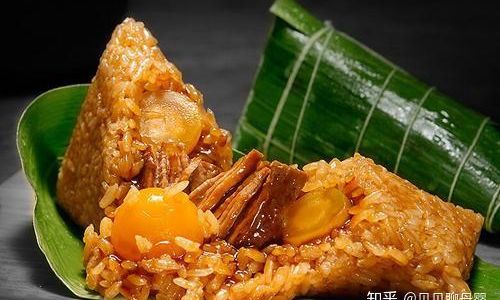
Once the zongzi are wrapped, they should be placed in a large pot filled with enough water to fully submerge them. Bring the water to a rolling boil, and then reduce the heat to a simmer. Simmering allows for gentle cooking and prevents the zongzi from becoming too soft or falling apart. It is important to maintain a consistent temperature throughout the cooking process.
To check for doneness, you can use a fork or chopstick to gently pierce the center of a zongzi. If the rice feels tender and sticky, it is likely cooked through. Alternatively, you can remove a zongzi from the pot and let it cool slightly before unwrapping it to check the texture.
-
Post-Boiling Care
After boiling, it is important to let the zongzi cool in the water for a while. This helps in firming up the texture and preventing the rice from becoming overly sticky. Once cooled, you can remove the zongzi from the pot and let them drain on a paper towel or clean kitchen cloth. They can then be served immediately or stored in the refrigerator for later use.
Cultural Significance and Variations
The tradition of making and eating zongzi during the Dragon Boat Festival is steeped in cultural significance. It is not just a culinary delight but a symbol of unity, loyalty, and respect for ancestors. Pyramid-shaped zongzi, with their distinctive appearance, are a testament to the ingenuity and creativity of Chinese cuisine.
-
Regional Variations
Pyramid-shaped zongzi may vary slightly in shape, size, and filling depending on the region. In southern China, for example, zongzi are often filled with sweet ingredients such as red bean paste, lotus seed paste, or salted egg yolks. In contrast, northern zongzi tend to be more savory, with fillings like pork, mushrooms, and salted duck eggs. These regional variations reflect the diverse culinary traditions and preferences across China.
-
Symbolism
The pyramid shape of the zongzi is not just for aesthetic purposes. It is believed to symbolize the pyramid-like hat worn by scholars in ancient China, representing wisdom and knowledge. The bamboo leaves, which wrap the zongzi, symbolize purity and strength, while the rice represents abundance and nourishment. Together, these elements create a dish that is not only delicious but also deeply meaningful.
-
Modern Innovations
In recent years, there has been a surge of innovation in zongzi-making, with chefs and food enthusiasts experimenting with new fillings, shapes, and wrapping materials. Pyramid-shaped zongzi have been given a modern twist with fillings like chocolate, ice cream, and even vegan options. These innovations have made zongzi more accessible and appealing to a wider audience, while still preserving the traditional essence of the dish.
Conclusion
Boiling pyramid-shaped zongzi is an art that requires careful attention to detail and an understanding of the various factors that influence cooking time. By soaking the rice properly, wrapping the zongzi tightly, and maintaining a consistent temperature during boiling, you can achieve perfectly cooked zongzi that are tender, sticky, and bursting with flavor. Moreover, the tradition of making and eating zongzi during the Dragon Boat Festival is a cherished cultural practice that connects people across generations and regions.
As you prepare to boil your pyramid-shaped zongzi, remember that the process is as much about respecting tradition as it is about enjoying a delicious meal. Take your time, savor the experience, and let the aroma of cooking zongzi fill your home with the warmth and spirit of the Dragon Boat Festival. Whether you are a seasoned zongzi maker or a novice, the joy of sharing these delicious dumplings with family and friends is a timeless tradition that will continue to be cherished for generations to come.
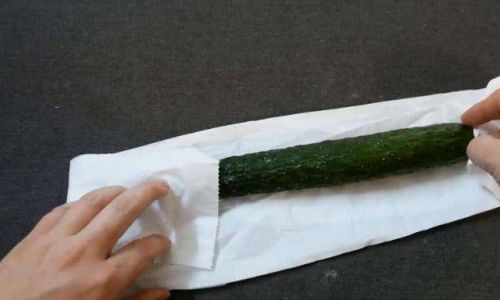
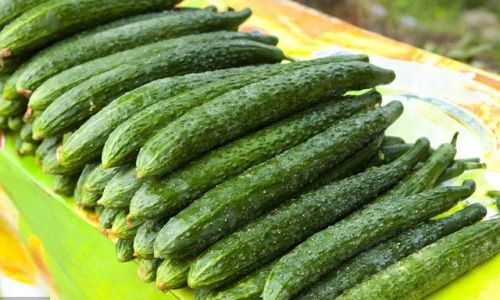
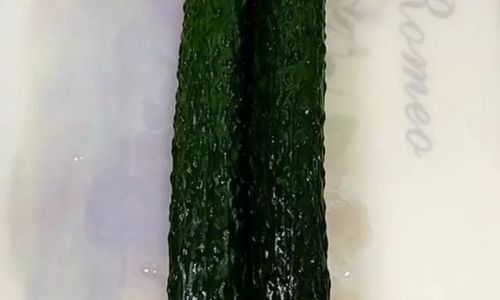
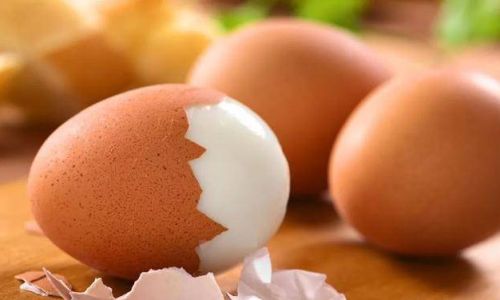
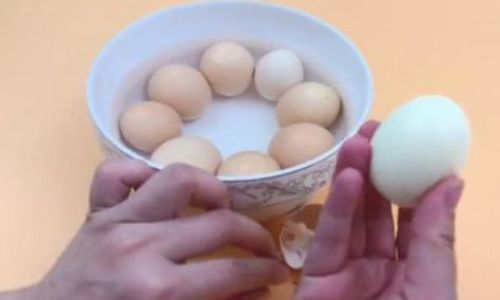
0 comments